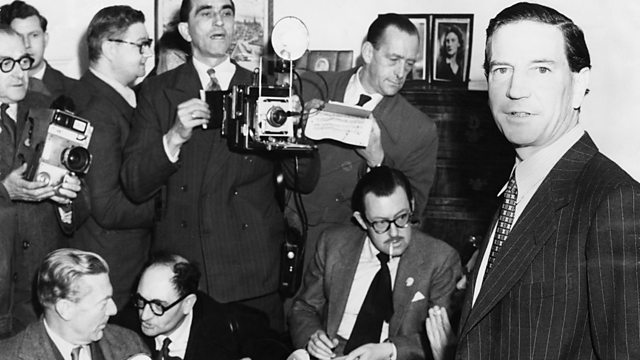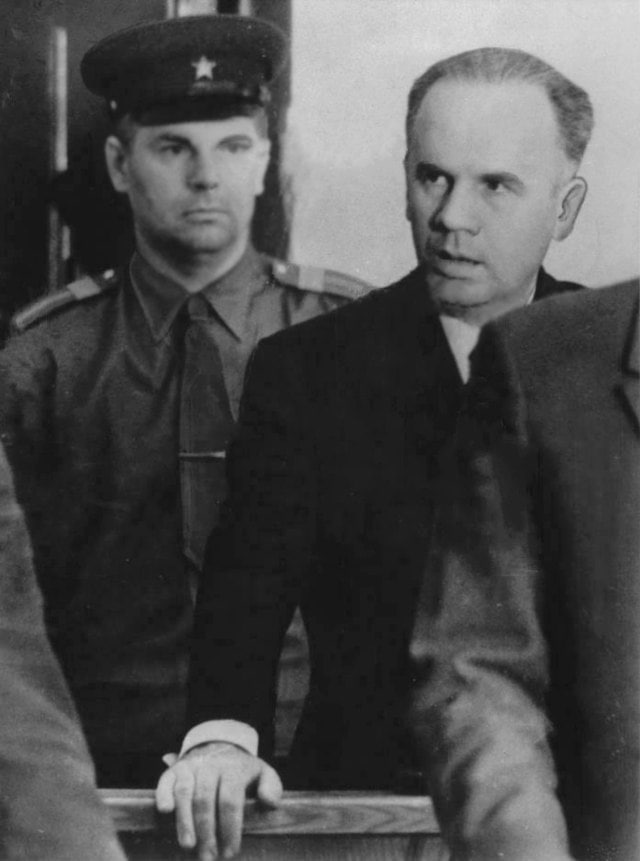1.0 Introduction
1.1 Definition of a Double Agent
A double agent is a spy who pretends to serve one government while actually serving another. A government or intelligence service employs an individual in this complex role to gather and report secret information about an enemy or target organisation. However, instead of remaining loyal to their employer, the double agent secretly provides information to another government or organisation, effectively spying on their own country or employer for the benefit of another (source).
The dual allegiance (or perceived allegiance) of double agents makes them a valuable asset in espionage and counterintelligence operations (source).
1.2 Brief History and Evolution of Double Agents in Espionage
The concept of double agents is not new and has been a part of espionage and counterintelligence operations for centuries. Historical records and accounts reveal double agents in the intrigues of ancient civilizations, through the world wars, and into the modern era of cyber espionage.
One of the earliest documented uses of double agents dates back to the military strategies employed in Sun Tzu’s “The Art of War” (source). He stated “It is essential to seek out enemy agents who have come to conduct espionage against you and to bribe them to serve you. Give them instructions and care for them. Thus doubled agents are recruited and used” (source).
The use of double agents became more sophisticated during World War I and II, where they played critical roles in misinforming the enemy and securing vital victories (source). The Cold War era saw a significant increase in using double agents, with infamous cases such as Kim Philby and Aldrich Ames highlighting the dangers and advantages of double agentry (source).
The evolution of double agents has paralleled advancements in technology and communication, adapting to new methods of espionage and counterespionage in the digital age.
1.3 Double Agents in Intelligence and Counterintelligence Operations
Double agents hold a unique and crucial position in the realm of intelligence and counterintelligence. By providing access to the inner workings, plans, and secrets of an enemy or target organisation, double agents can significantly influence the outcome of military, political, and economic conflicts (source).
Their ability to mislead and disseminate disinformation can lead to strategic advantages, prevent potential threats, and protect national security interests. However, the use of double agents comes with significant risks, as their true loyalties may be difficult to ascertain, and their actions can sometimes backfire, causing harm to their employers or allies (source).
Despite these risks, the strategic value of double agents in undermining enemy operations, gaining critical intelligence, and shaping the course of conflicts is undeniable. Their contributions have often been pivotal in the history of espionage, making them an indispensable tool in the intelligence community’s arsenal.
2.0 The Making of a Double Agent
2.1 Recruitment
The recruitment of double agents often involves a complex and highly strategic process. Intelligence agencies persuade or coerce individuals within enemy or rival organisations to become informants. The recruitment process may vary, but it generally involves identifying potential agents based on their access to valuable information, their level of dissatisfaction with their current situation, and their susceptibility to certain incentives.
According to a detailed account on the recruitment of spies, the work of detecting and “doubling” spies who betray their oaths to work on behalf of a foreign intelligence agency is a critical part of intelligence operations (source). Situations where an individual gets caught spying and then agrees to become a double agent to avoid punishment or for other personal reasons may also give rise to double agents, a scenario described as involving ‘re-doubled’ agents (source).
2.2 What drives someone to become a double agent?
The motivations behind why individuals choose to become double agents are varied and complex. Ideological reasons, such as a change in political beliefs or disillusionment with one’s own country, to coercion, where individuals face blackmail or threats into spying, can range the motivations for espionage (source).
Financial incentives also play a significant role, as the promise of substantial monetary rewards can tempt individuals to betray their country or organisation.
Moreover, another potential motivation could be personal grievances. At times, agents feel like their organisation may have wronged them or they want to seek revenge against their own organisation for whatever reason caused their grievances. An example of this is the case of Ana Belen Montes, former Defense Intelligence Agency (DIA) analyst who started spying for Cuba’s Direccion de Inteligencia (DI). Her resentment towards US policies against Cuba motivated her to become a double agent (source).
Secrecy and lies surround the life of a double agent. The agent must lie to everyone around them and enter in the conviction of their own lies. These lies often can create confusion as becoming part of the intelligence world with a strong sense of purpose and a clear idea of your cover is crucial. Sometimes all these lies, and creation of fake personas and personalities can lead a person to lose their sense of self and of any ideological purpose.
In the case of Kim Philby, arguably one of the most infamous double agents of all time, it has been long argued that he spied for the Soviets because of his strong ideological convictions. However, his handler – Yuri Modin – even stated that it was hard to understand who Philby ‘really’ was, through experiences in Nazi Germany and Fascist Spain, the constant living a lie and faking your personality arguably made Philby lose his sense of self. Therefore, sometimes motivations can be complicated, and understanding the full scope of a double agent’s psyche becomes extremely difficult because their lives and many others hinge on their ability to never reveal their true self to anyone(source).
Recruiting an agent from another service, whether a rival or a so-called friendly one, is a high point in every intelligence officer’s career, indicating the lengths to which officers will go to secure a double agent (source). This diversity of motivations underscores the intricate human dynamics at play in the world of espionage.
2.3 Training and Tradecraft
Once recruited, double agents undergo training in espionage techniques and tradecraft to ensure they can effectively gather and transmit intelligence without arousing suspicion. This training may include instruction on secure communication methods, surveillance detection, and counter-surveillance techniques, as well as how to handle interrogations or debriefings by their targets.
The skills taught to double agents are designed to protect their cover, ensure the credibility of the information they provide, and safeguard the operations they are involved in. Discussions on espionage emphasise the importance of tradecraft for double agents, highlighting that the ability to navigate the secret and opaque world of intelligence gathering is critical for success (source).
One must also understand the various misconceptions that pop culture gave us about double agents. First of all, there is a difference between the idea of an agent who works for an agency and sells the information to a highest bidder, a double agent like that would be specifically called a ‘Freelance.’ Nonetheless, considering the dangerous and secretive nature of espionage, Freelancers only manage to freelance once, after they either get poached by secret services or they end up out of options (source).
Moreover, like any other agent, one intelligence service at a time controls double agents.. So, if control moves from agency X to agency Y, agency Y has created a successful counterintelligence operation (source).
In the realm of professional counterintelligence officers, double agents split into two subheadings, a ‘playback’ or a ‘provocation.’ Involving an agent and not a staff officer. Agency X pushes a ‘provocation,’ an agent, on purpose to be recruited by agency Y to gather intelligence on agency Y and their activities, while agency X remains in control of this double agent. Whereas, a ‘playback’ is an agent of another agency, usually hostile, whom you identified and “turned” to proceed with their secret work but under your control now. This is a very effective weapon to use against your opponent, especially for disinformation tactics (source).
3.0 Famous Cases of Double Agents
3.1 Kim Philby (UK/USSR)

Harold Adrian Russell “Kim” Philby, a member of the infamous Cambridge Five, was a British intelligence officer who doubled as a Soviet spy. His espionage activities began during World War II and extended into the early stages of the Cold War. Philby’s betrayal was monumental, as he provided the Soviet Union with a wealth of information that compromised Western intelligence operations and agents. His defection to the Soviet Union in 1963, after being unmasked, sent shockwaves through the British intelligence community, highlighting vulnerabilities and leading to a reassessment of counterintelligence practices. The intelligence community often consider Philby the most successful double agent in the context of the Soviet Union’s espionage efforts against the West (source).
3.2 Aldrich Ames (USA/USSR)

Aldrich Hazen Ames, born on May 26, 1941, in River Falls, Wisconsin, became one of the most notorious double agents in the history of the United States. Ames joined the CIA in 1962, embarking on a career that would eventually lead to his infamy. Despite his initial role in counterintelligence, aimed at thwarting Soviet espionage, Ames began spying for the Soviet Union in 1985, motivated by financial difficulties and personal dissatisfaction with his career progression (source).
As a double agent, Ames’s accomplishments for the Soviets were devastating to US intelligence operations. He compromised more CIA assets than any other spy in history up to that point, directly leading to the compromise or death of at least ten American sources in the Soviet Union. Ames provided the KGB with a wealth of information, including details on US intelligence operations, identities of CIA and FBI informants, and sensitive national security information. His betrayal severely damaged US intelligence capabilities and resulted in a comprehensive overhaul of the CIA’s security and counterintelligence practices (source).
The FBI arrested Ames in 1994, bringing an end to his espionage activities. His capture was the result of an internal CIA investigation that noticed his suddenly lavish lifestyle, which was inconsistent with his official salary. Further investigation, including surveillance and analysis of his bank accounts, led to his arrest. Ames pleaded guilty to espionage charges, and the court sentenced him to life in prison without the possibility of parole, thus concluding one of the most damaging espionage cases in US history. (source).
Ames’s case led to significant changes in how intelligence agencies handle security clearances and monitor their operatives, to prevent such betrayals in the future.
3.3 Robert Hanssen (USA/USSR)

Robert Philip Hanssen, born on April 18, 1944, led one of the most damaging double lives in the annals of American espionage. An agent for the FBI, Hanssen began his clandestine activities in 1979, betraying his country by passing highly classified information to the Soviet Union, and later, the Russian Federation. The Department of Justice has described his espionage activities, which spanned over two decades, as ‘possibly the worst intelligence disaster in U.S. history’ (source).
Hanssen’s accomplishments as a double agent were both profound and devastating. He provided his Soviet handlers with thousands of documents detailing the United States’ nuclear strategy, the identities of undercover FBI and CIA agents, and the methods the U.S. intelligence community used for surveillance of foreign embassies. Hanssen’s betrayal led to the compromise of numerous classified operations and directly resulted in the deaths of at least three Soviet officers who were working for the United States (source).
The FBI apprehended Hanssen at Foxstone Park, Virginia, on February 18, 2001, bringing his espionage to an abrupt end at a location where he had previously made dead drops of classified information. His capture was the culmination of an intensive FBI investigation, codenamed “Operation Ghost Stories,” which utilised surveillance, forensic accounting, and the analysis of Hanssen’s own communications with his Soviet handlers. By cooperating with authorities and pleading guilty, Hanssen avoided the death penalty and received a conviction for espionage, resulting in a life sentence in prison without the possibility of parole (source).
3.4 Oleg Penkovsky (USSR/USA)

Oleg Penkovsky, a colonel in Soviet military intelligence (GRU), became one of the most valuable Western double agents during the Cold War. He provided the United States and the United Kingdom with crucial information about Soviet military capabilities, including details on the Soviet missile program. Penkovsky’s intelligence was instrumental during the Cuban Missile Crisis, helping to prevent a potential nuclear confrontation between the superpowers. Arrested by the Soviet authorities, they executed Penkovsky in 1963. People often credit his contributions with altering the course of the Cold War and demonstrating the strategic value of double agents in espionage (source).
4.0 The Psychological and Ethical Dimensions
4.1 Living a double life: the psychological toll it plays.
The life of a double agent is fraught with psychological challenges, marked by the constant stress and fear associated with maintaining a dual existence. The psychological toll of living a double life includes a wide range of mental health issues, such as anxiety disorders, depression, and a profound sense of isolation.
The continuous pressure to conceal one’s true identity, coupled with the fear of discovery and the paranoia of betrayal, can be immensely taxing. A study highlighted in the Journal of Police and Criminal Psychology discusses the mental toll that living a double life can take, emphasising the psychological strain that arises from the essence of undercover operations (source).
Moreover, the ethical quandaries faced by double agents exacerbate their psychological burdens. The moral ambiguity of their actions—serving one nation while betraying another—often leads to an internal moral conflict. This ethical dilemma is not just a matter of national allegiance but extends to the personal level, where the double agent must reconcile their actions with their personal moral compass.
psychological literature highlights how this constant ethical tension contributes to the overall stress experienced by double agents, making it difficult for them to find peace with their decisions (source). The fear of making the wrong choice or causing harm to innocent parties can weigh heavily on their conscience, further complicating their psychological state.
One cannot understate the long-term impact of these psychological and ethical challenges. Studies have shown that the effects of living a double life linger well beyond an agent’s active duty, affecting their ability to trust, form meaningful relationships, and integrate into society post-service (source). The secrecy and duplicity required in their work create barriers to emotional intimacy, leaving many former agents struggling with issues of identity and belonging long after their espionage careers have ended. This body of research underscores the need for a better support system for double agents, both during and after their service, to help them navigate the complex web of psychological and ethical challenges they face (source).
5.0 Technological Impact on Double Agents
Digital technology has significantly altered the landscape of espionage and counterespionage, fundamentally changing the way double agents operate and how intelligence agencies manage security and information gathering. The integration of technology into everyday life has expanded the toolkit available to double agents, offering new methods for communication, data extraction, and evasion of detection that were previously unimaginable (source).
One of the most significant impacts of technology on espionage is the role of cybersecurity in intelligence operations. The reshaping of espionage through digital technology and the proliferation of digital communication tools has made encryption and secure channels critical for the safe exchange of information (source). Double agents now rely on sophisticated cybersecurity measures to protect their identities and the integrity of the information they share. This digital evolution has also led to the development of countermeasures by intelligence agencies, aiming to decrypt and intercept communications, thereby turning cybersecurity into a battleground of wits between spies and counterintelligence operatives (source).
Moreover, technology has introduced new vulnerabilities and opportunities for espionage, such as the exploitation of social media and other online platforms for intelligence gathering.
An article on the strategic consequences of digital espionage highlights the SolarWinds incident as a stark example of how digital espionage campaigns can infiltrate thousands of organisations globally, including US federal agencies, by exploiting supply-chain vulnerabilities (source). This incident underscores the complexity and reach of modern espionage efforts, where double agents and intelligence operatives must navigate a digital terrain filled with both opportunities and traps.
Furthermore, the use of biometric technology for intelligence asset protection has become a double-edged sword. While it offers enhanced security measures for verifying the identities of operatives and protecting sensitive information, it also presents new challenges for double agents who must evade these biometric systems to maintain their cover (source).
The development and implementation of counterintelligence measures have become increasingly sophisticated, leveraging technology to identify and neutralise threats posed by double agents.
6.0 Conclusion
In the world of espionage, the role of double agents has been pivotal in shaping the outcomes of conflicts and safeguarding national security interests. From the ancient stratagems documented in Sun Tzu’s “The Art of War” to the high-stakes cyber operations of today, double agents have continually adapted to the evolving landscape of intelligence and counterintelligence operations. Their stories, fraught with danger, deception, and moral dilemmas, underscore the complex nature of espionage and the human element at its core.
The emergence of digital technology has ushered in a new era for espionage, profoundly changing how double agents and the broader intelligence community operate. As cybersecurity becomes a critical battleground, the interplay between technological advancements and traditional tradecraft presents both opportunities and challenges. Double agents, navigating this digital terrain, must balance the use of cutting-edge technology with the timeless skills of tradecraft to effectively execute their missions. Meanwhile, intelligence agencies must continuously innovate to protect national secrets and counteract espionage efforts, highlighting the perpetual cat-and-mouse game that defines the intelligence world.
Ultimately, the essence of being a double agent remains unchanged—a life of duplicity, risk, and sacrifice, driven by many motivations and fraught with psychological and ethical challenges. As technology continues to reshape the parameters of espionage, the stories of double agents, both past and present, serve as a testament to the enduring complexity and intrigue of intelligence work. Their contributions, often hidden from the public eye, play a crucial role in the intricate ballet of global politics and security, reminding us of the delicate balance between trust and betrayal that underpins the clandestine world of espionage.

